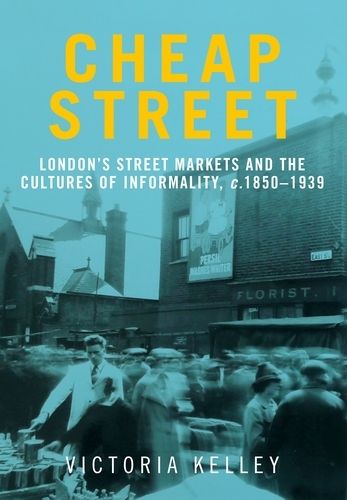Readings Newsletter
Become a Readings Member to make your shopping experience even easier.
Sign in or sign up for free!
You’re not far away from qualifying for FREE standard shipping within Australia
You’ve qualified for FREE standard shipping within Australia
The cart is loading…






Cheap street is a lively and scholarly account of London’s street markets, which were an overlooked site of urban modernity and the most vigorous outgrowth of the informal economy that flourished below and beyond the recognised institutions of the consumer city. Kelley brings together design and material culture history, urban studies and social and cultural history to analyse the street markets’ distinct characteristics. These included the flaring naked flames of their naphtha lights, their impermanent yet persistent unofficial occupation of space, and the noisy performative selling that took place there. The result is a new interpretation of London’s urban geographies, moving beyond the accepted view of the West End as the consumer city and the East as the city of poverty, and demonstrating that the informality of the street markets was a powerful force in shaping representations of London and its people. – .
$9.00 standard shipping within Australia
FREE standard shipping within Australia for orders over $100.00
Express & International shipping calculated at checkout
Cheap street is a lively and scholarly account of London’s street markets, which were an overlooked site of urban modernity and the most vigorous outgrowth of the informal economy that flourished below and beyond the recognised institutions of the consumer city. Kelley brings together design and material culture history, urban studies and social and cultural history to analyse the street markets’ distinct characteristics. These included the flaring naked flames of their naphtha lights, their impermanent yet persistent unofficial occupation of space, and the noisy performative selling that took place there. The result is a new interpretation of London’s urban geographies, moving beyond the accepted view of the West End as the consumer city and the East as the city of poverty, and demonstrating that the informality of the street markets was a powerful force in shaping representations of London and its people. – .